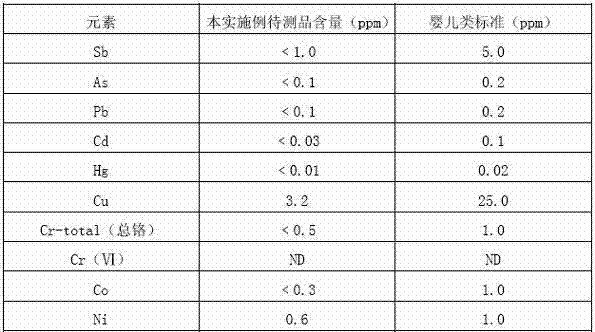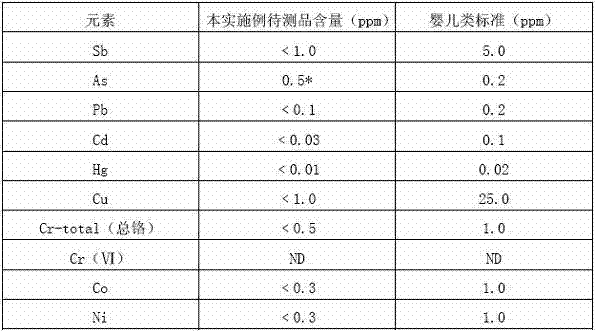Dye of walnut green husk prepared by walnut green husk, its preparation method and method for dyeing fabric
A technology of walnut green skin and dyeing solution, which is applied in the direction of dyeing method, chemical instrument and method, application, etc., can solve the problems of undisclosed brown pigment dyeing wastewater, increase production cost, high energy consumption, etc., achieve strong color fastness and save production Cost, easy post-processing effects
- Summary
- Abstract
- Description
- Claims
- Application Information
AI Technical Summary
Problems solved by technology
Method used
Image
Examples
Embodiment 1)
[0052] The method for preparing walnut green husk dyestuff of the present embodiment and using it for dyeing may further comprise the steps:
[0053] ①Preparation of dechlorinated softened water: first pump tap water into a 50 cubic meter water storage tank, and let it stand in the water storage tank for 1 night (8-12 hours) for dechlorination; then pass the dechlorinated tap water through a water softener. Remove calcium and magnesium ions in the water to obtain dechlorinated softened water at normal temperature for use; the water softener used in this example is the automatic water softener of the CLSN-18-BL-DA model sold by Beijing Kelijie Water Treatment Engineering Co., Ltd. device.
[0054] ②Preparation of dechlorinated softened hot water: take a part of the dechlorinated softened water prepared in step ① and pass it into a solar water heater to heat it to 60-62°C; the hot water heated to 60-62°C is passed into a constant temperature hot water tank The medium heat prese...
Embodiment 2)
[0088] The rest of this embodiment is the same as embodiment 1, the difference is:
[0089] In step ①, in the process of treating tap water, after being treated by a water softener, the tap water is further passed into a water purifier for further purification treatment. The water purifier is Shanghai Lisheng Water Purification Equipment Co., Ltd. The water purifier of the LH3-8AD model produced by the company.
[0090] Use the demineralized water prepared in step 1 of this embodiment to wash, soak green skin, filter, concentrate, add ferrous sulfate to configure the white cotton cloth dyed with dye liquor, and the color of the white cotton cloth dyed is softer than that of the fabric dyed in Example 1; it is used for high-grade fabrics such as silk For dyeing, soaking water is preferably treated in three steps of dechlorination, softening and purification.
Embodiment 3)
[0092] The rest of this embodiment is the same as embodiment 1, the difference is:
[0093] In step ②, when heating the soaking water, the dechlorinated demineralized water is heated to 62-63° C. with a solar water heater;
[0094] In step ④, when soaking granular green walnut peels, the mass ratio of walnut green peels to water is 1:9, and the water temperature is maintained at 62 to 63° C. in the soaking tank, and the green walnut peels are soaked in water for 9 hours.
PUM
| Property | Measurement | Unit |
|---|---|---|
| color fastness | aaaaa | aaaaa |
| color fastness | aaaaa | aaaaa |
Abstract
Description
Claims
Application Information
 Login to View More
Login to View More - R&D
- Intellectual Property
- Life Sciences
- Materials
- Tech Scout
- Unparalleled Data Quality
- Higher Quality Content
- 60% Fewer Hallucinations
Browse by: Latest US Patents, China's latest patents, Technical Efficacy Thesaurus, Application Domain, Technology Topic, Popular Technical Reports.
© 2025 PatSnap. All rights reserved.Legal|Privacy policy|Modern Slavery Act Transparency Statement|Sitemap|About US| Contact US: help@patsnap.com


